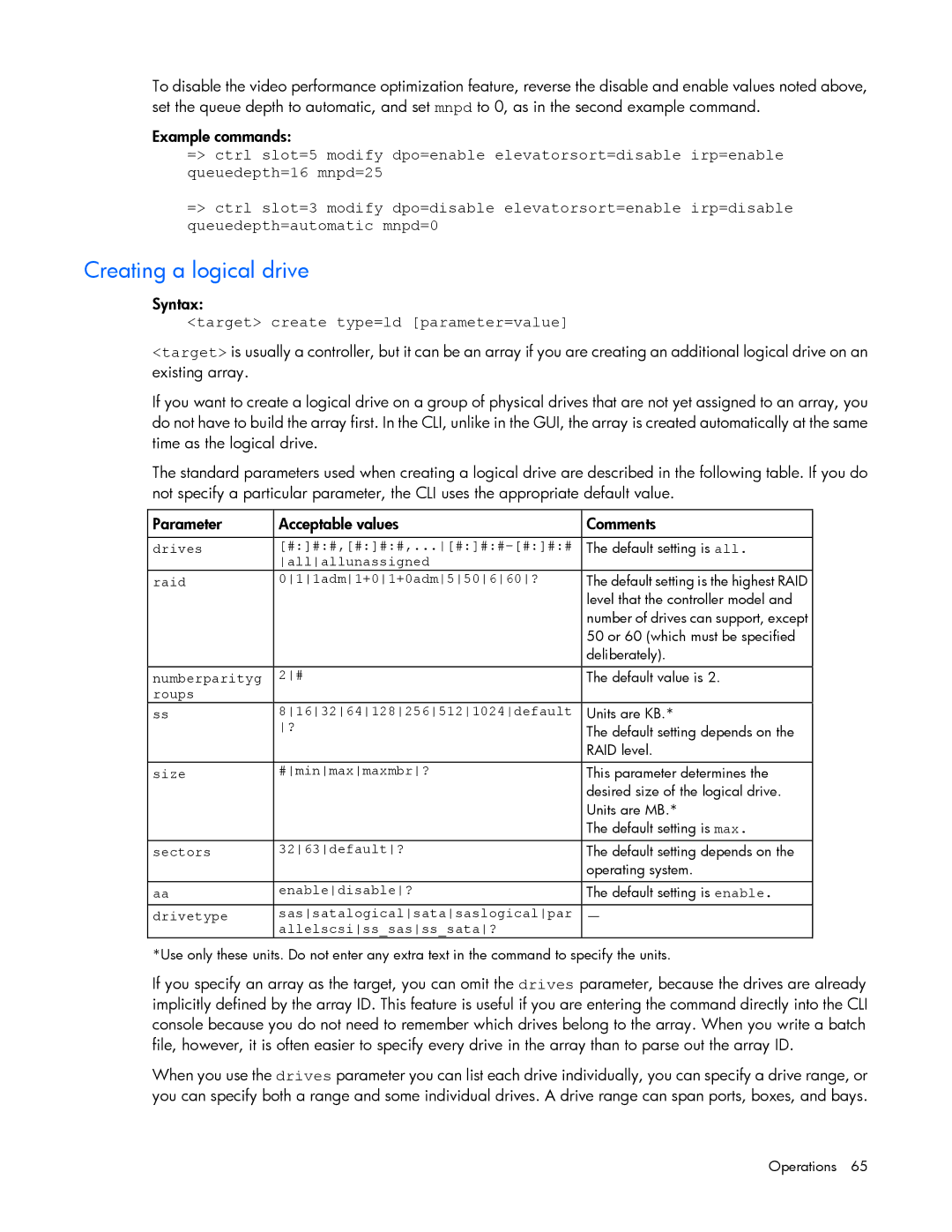To disable the video performance optimization feature, reverse the disable and enable values noted above, set the queue depth to automatic, and set mnpd to 0, as in the second example command.
Example commands:
=> ctrl slot=5 modify dpo=enable elevatorsort=disable irp=enable queuedepth=16 mnpd=25
=> ctrl slot=3 modify dpo=disable elevatorsort=enable irp=disable queuedepth=automatic mnpd=0
Creating a logical drive
Syntax:
<target> create type=ld [parameter=value]
<target> is usually a controller, but it can be an array if you are creating an additional logical drive on an existing array.
If you want to create a logical drive on a group of physical drives that are not yet assigned to an array, you do not have to build the array first. In the CLI, unlike in the GUI, the array is created automatically at the same time as the logical drive.
The standard parameters used when creating a logical drive are described in the following table. If you do not specify a particular parameter, the CLI uses the appropriate default value.
Parameter | Acceptable values | Comments |
|
|
|
drives | The default setting is all. | |
| allallunassigned |
|
raid | 011adm1+01+0adm550660? | The default setting is the highest RAID |
|
| level that the controller model and |
|
| number of drives can support, except |
|
| 50 or 60 (which must be specified |
|
| deliberately). |
|
|
|
numberparityg | 2# | The default value is 2. |
roups |
|
|
ss | 81632641282565121024default | Units are KB.* |
| ? | The default setting depends on the |
|
| RAID level. |
|
|
|
size | #minmaxmaxmbr? | This parameter determines the |
|
| desired size of the logical drive. |
|
| Units are MB.* |
|
| The default setting is max. |
sectors | 3263default? | The default setting depends on the |
|
| operating system. |
aa | enabledisable? | The default setting is enable. |
drivetype | sassatalogicalsatasaslogicalpar | — |
| allelscsiss_sasss_sata? |
|
*Use only these units. Do not enter any extra text in the command to specify the units.
If you specify an array as the target, you can omit the drives parameter, because the drives are already implicitly defined by the array ID. This feature is useful if you are entering the command directly into the CLI console because you do not need to remember which drives belong to the array. When you write a batch file, however, it is often easier to specify every drive in the array than to parse out the array ID.
When you use the drives parameter you can list each drive individually, you can specify a drive range, or you can specify both a range and some individual drives. A drive range can span ports, boxes, and bays.
